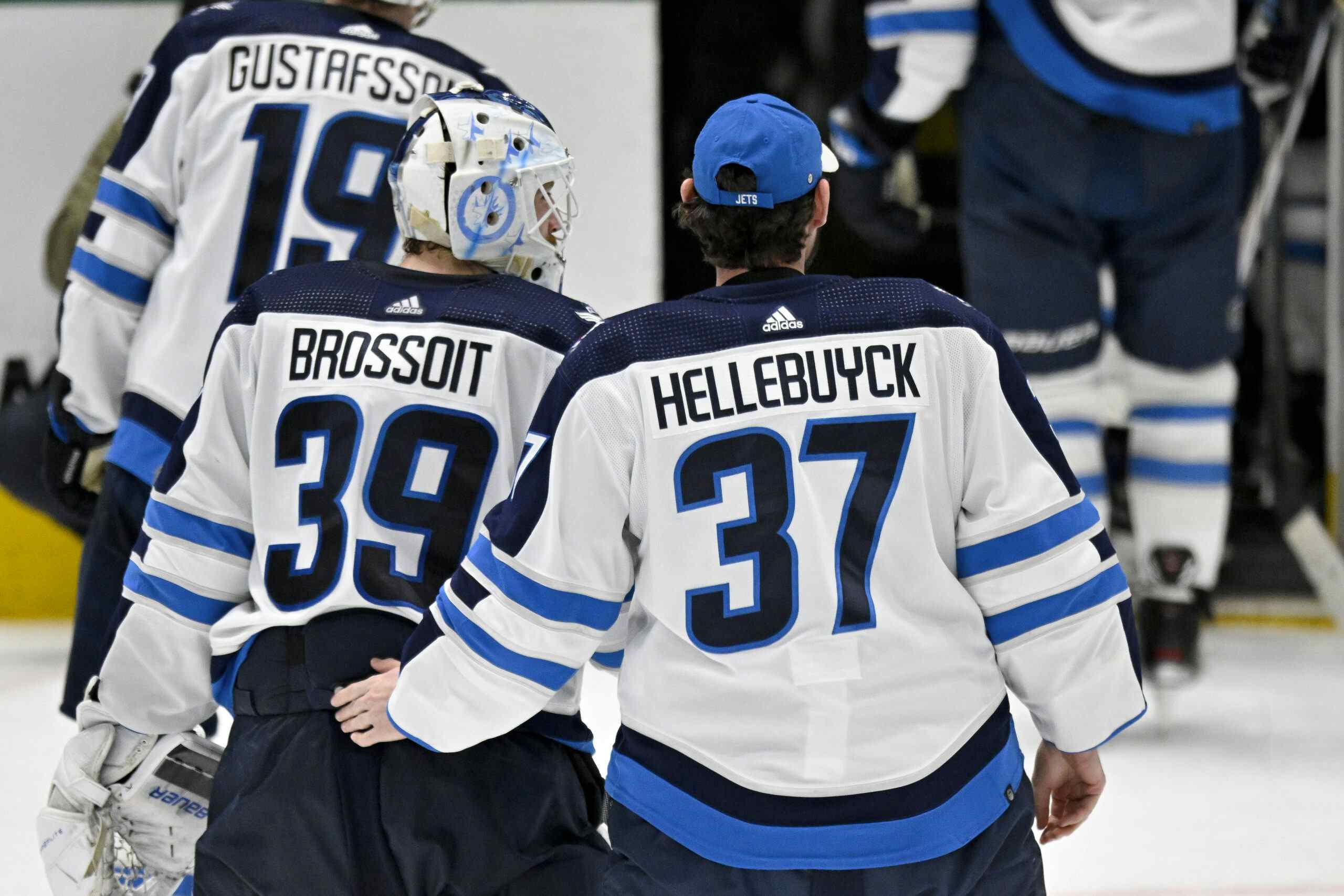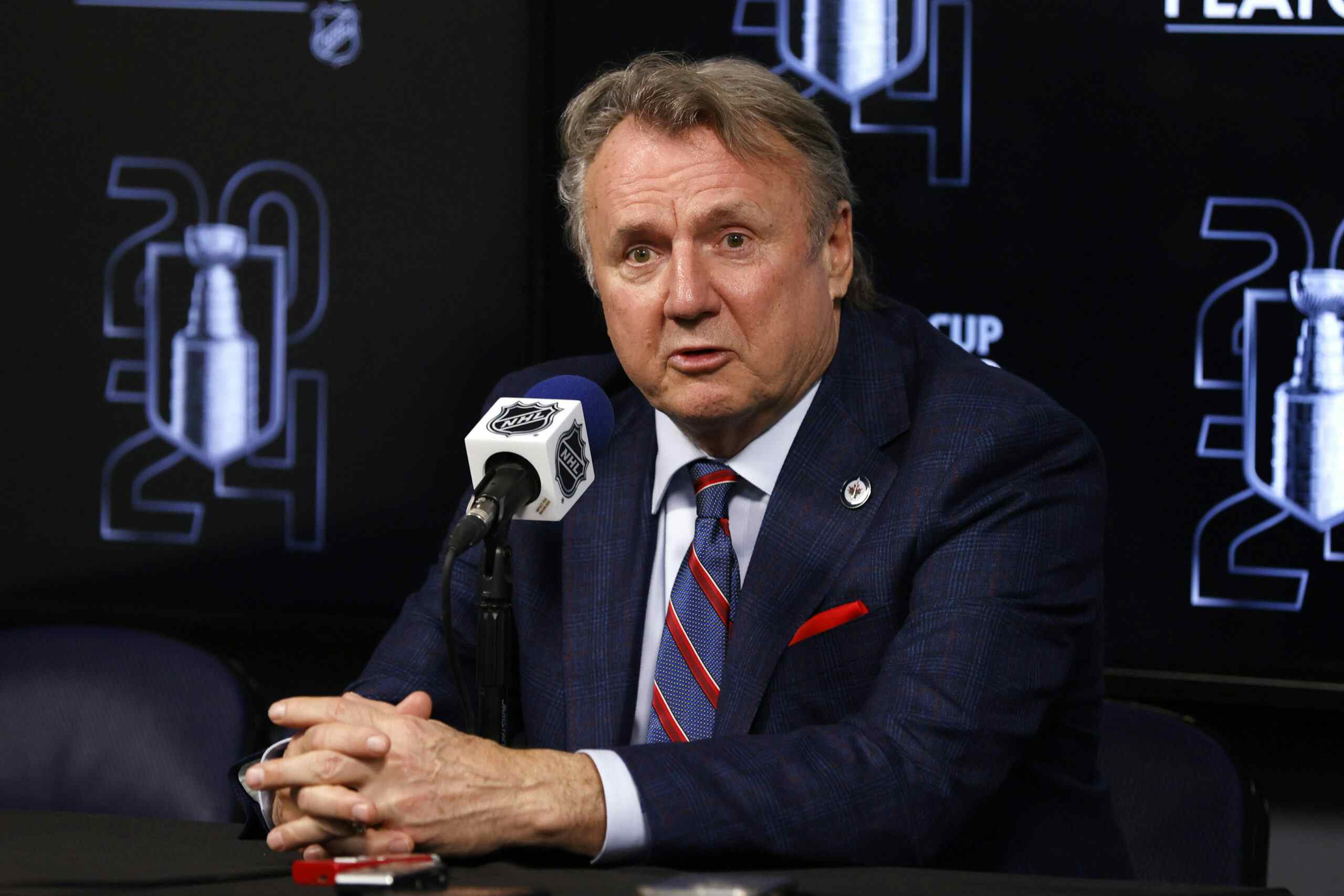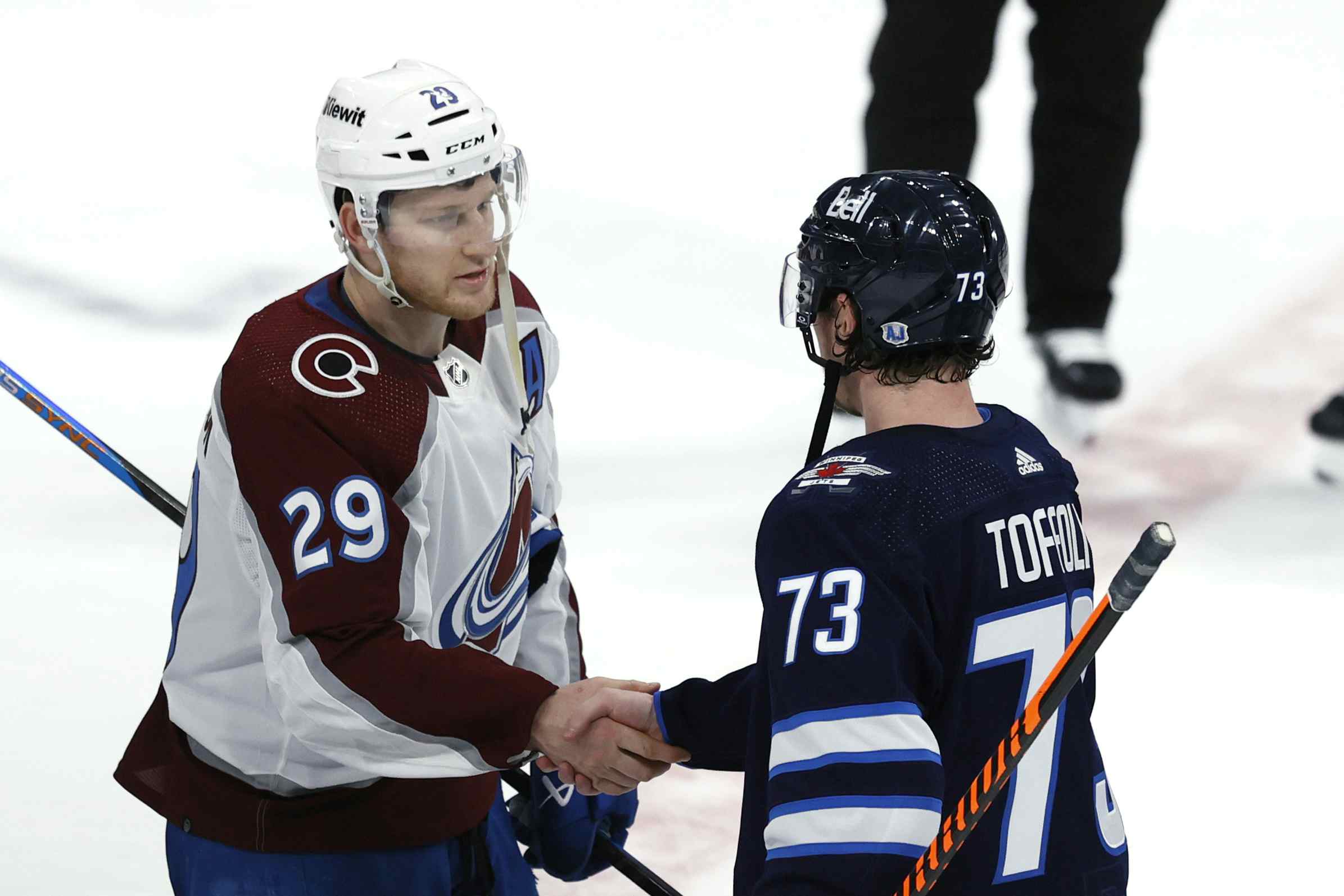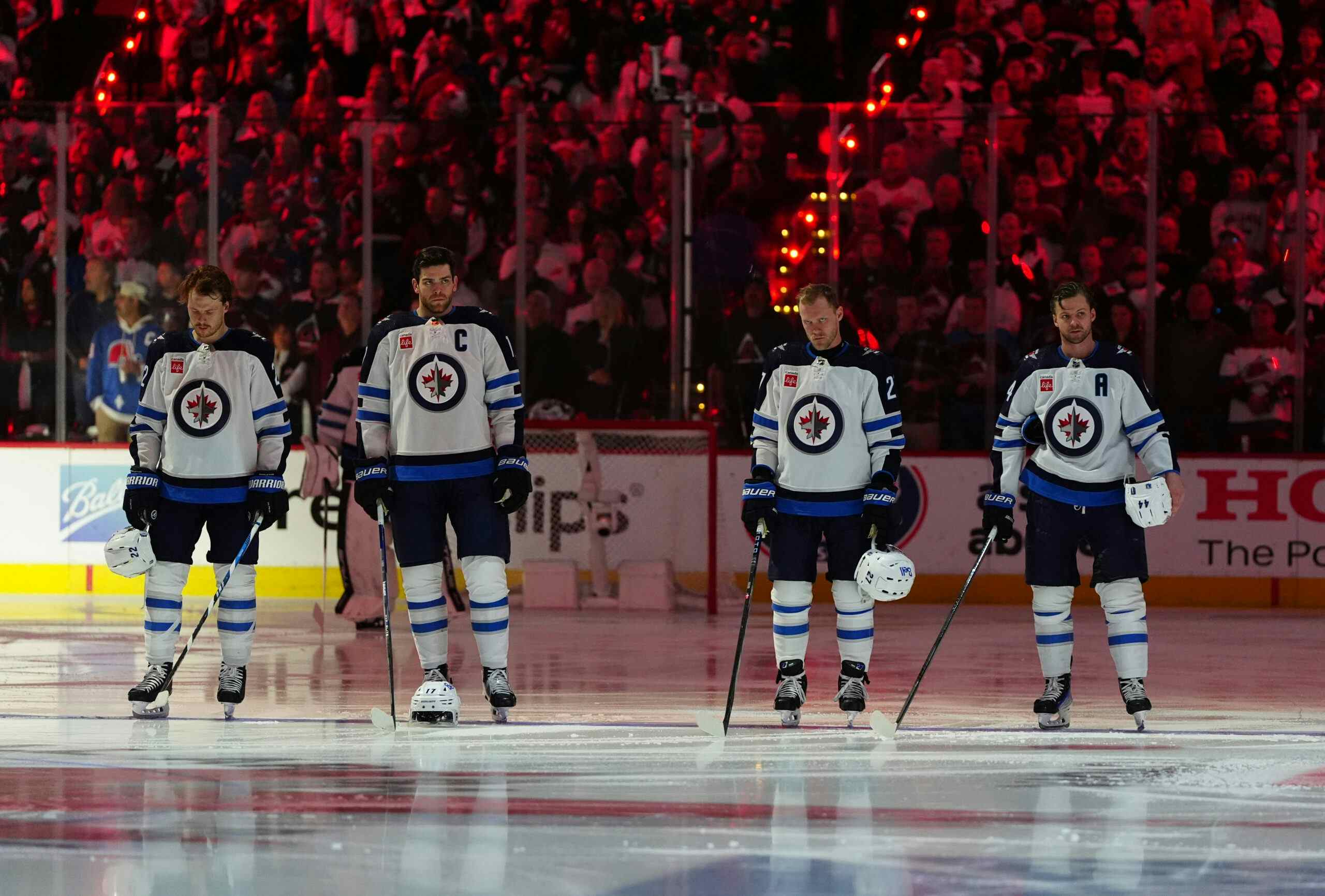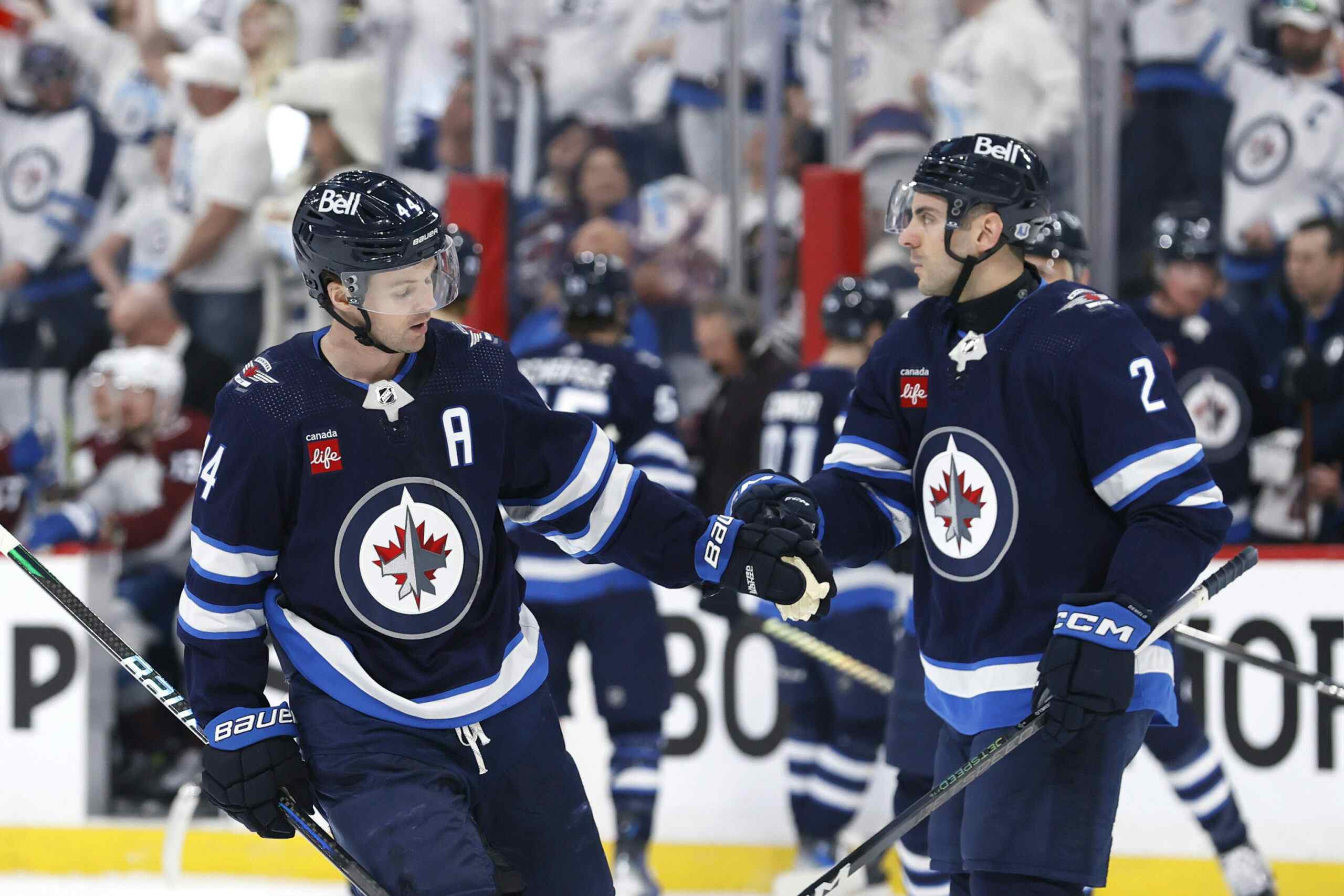Jets Defence Usage: Byfuglien A Unique Talent

The other day we looked at how the Jets’ coaching staff uses their forwards. We found a lot of what we already knew – that line matching is inconsistent or missing, that Matt Halischuk is not a top-9 quality forward in that environment, and that the fourth line is both a mess and comes with an opportunity cost when Noel gives that group offensive zone starts to shelter them further. We also looked at a chart by Tyler Dellow that found the bottom-6 forwards and bottom-3 defence dragged down anyone they played with.
I spend a lot of time talking about the end of the roster in my work. You might think that I believe they’re more important than the big minute players. Instead, I hope you’ll see it as a balance to a lot of what I hear in the mainstream press, in the comments sections of various online sources, and on twitter.
One of the most prominent messages taken on by Jets fans is that the team should trade star defender Dustin Byfuglien. He makes too many mistakes, he’s not engaged enough, they’ll say. But there is a whole stream of criticism that goes ‘Buf can do anything he wants on the ice because of his size, strength, speed, and puck control. So why doesn’t he just score every shift!? Trade the bum!’ (Some editorial license taken.)
Below we’ll look at what Dustin Byfuglien is and I hope it’s obvious just how completely irreplaceable he is to this team. He’s not perfect – far from it – but he is far and away the best defender this team has. I contend that he’s PK Subban with less help, Erik Karlsson with less fanfare, or at worst a rich man’s James Wisniewski. His only crime is not being Chris Pronger or Ray Bourque.
We could look at his scoring stats – he’s the second highest scoring defencemen in his four seasons at the position behind Erik Karlsson, and third highest in points per game behind Karlsson and Letang at 0.7 pts/game. As well, he has the fourth most powerplay goals among NHL defencemen over the last four seasons (on a mostly miserable powerplay team), and the second most game winning goals on a win-challenged franchise.
Erik Karlsson has his detractors and certainly makes mistakes, but like Mike Green before him, no one trades defenders who average 57 points a season. That’s a unique piece on a hockey club, and most teams choose to build around it.
Even more importantly, Claude Noel puts Dustin Byfuglien out against the hardest opponents he can find, and he’s the only defender on the roster to play heavy minutes in all three disciplines. While facing Jonathan Toews, Zach Parise, David Backes, and other possession and scoring monsters, Byfuglien has the best possession numbers on the team.
The Chart

The chart is easy to read once you know it. All the stats use relative corsi, so we are comparing the Jets to each other. Each bubble is a player. Blue bubbles are positive corsi (shot attempts for – shot attempts against), orange are negative corsi. The size of the bubble is how big that number is (so Stuart is a big minus player, Trouba only a slightly minus player). The closer to the top the bubble is, the harder the competition they face on average. The closer to the right edge it is, the more of their shifts start in the offensive zone.
Instant Analysis
Let’s put aside Big Buf for a moment and look at the rest of the group.
Yes, the rookie defenceman gets the worst zone starts on the team. And yes, Adam Pardy – he of 34 career points in 219 games – gets a massive push to shelter him. It’s never a dull day with Claude Noel.
Pardy has had a more positive season than I expected, and these numbers tell us why. He faces poor competition and starts more often in the offensive zone than anyone by Paul Postma. I would never have guessed that. His healthy scratches make more sense in that light.
Speaking of Paul Postma (and we can now that he’s out of the woods on that blood clot), he too was better than I expected when healthy. This chart shows just how low my expectations were, I suppose. Easiest opposition, easiest zone starts, and spending far too much time in his own zone. He only played 8 games before the health scare, so it’s a small sample in the extreme. Still, we haven’t seen a different pattern from him in years past and I’m hard pressed to say that big orange circle is anything but indicative of his even strength play.
When the Jets were juggling 9 defenders in training camp, rumours surfaced that various teams were interested in Postma. Postma is now 24 with 261 professional games and is still no better than a warm body on this (Central cellar) blue line. With Trouba on track, Ellerby taken off waivers, and Redmond behind Postma in the depth chart, he’s more expendable than ever. Maybe he fetches a Zach Boychuk, or a similar Postma-equivalent at the forward position where the team is more in need. Maybe the team could trade him for a draft pick after spending one on Devin Setoguchi.
Mark Stuart does a lot less with similar minutes to rookie Jacob Trouba. We’ve watched with our own eyes how each of his partners has struggled as they enter his black hole of massive gaps and missed assignments. At this point he *may* be a penalty killing specialist. But this coach sees him as a fixture on a team that sent out Ron Hainsey after similar results in a much harder context.
Bogosian and Byfuglien
Bogosian has never quite been the player he’s paid to be on this team. Two years ago he was at risk of being traded as a toxic and possibly failed prospect. His season last year followed very closely to Ron Hainsey’s (his partner) by numbers, but his process looked much better (including his massive hits and huge slap shot, and that confident, ice-eating stride of his).
He’s been injured in every professional season, and has never managed a positive corsi number, despite mostly easy minutes (aside from last season). I think the logic went that since he played the toughs last year and looked the part on a revolving door blue line, a better partner and an easier assignment this year would mean he spent more time in the offensive zone than the defensive. It hasn’t happened yet by math. By eye, he still looks like a player, and he’s down to one or two brain cramps a game while still just 24 years old.
Byfguglien, meanwhile, has a sort of different statistical quirk. Currently, he’s the worst player on the team for on-ice save %. Many hockey numbers people say that on-ice shooting % and save % equal out over time, that they bounce up and down with luck as the primary determinant. They might say Byfuglien’s .892 is only a puck bounce away from Trouba’s .894 and Clitsome’s .900.
The problem with that analysis is that we’ve just named the Jets’ three most turnover prone defenders. And Dustin Byfuglien has been the team’s worst in that category three out of his four years on defence. In fact, where Bogosian’s trouble is his gap work and how easily he gives up the blue line (hence shot attempts against), Byfuglien’s trouble is dangerous turnovers, which common sense would tell us leads to a higher rate of goals against.
Overall, Byfuglien is -24 over the last 4 seasons. I know many people point to that as a sign that no matter how much he scores, he’s giving up more. At the same time, Tobias Enstrom is -17. Erik Karlsson is -16. Mark Streit is -44. Defenders on mediocre or bad teams are minus players, unavoidably. I believe it’s a function of poor goaltending and limited support.
This season, Byfuglien’s goals against rate spikes when he’s paired with Clitsome or Pardy (though it’s been a very small sample with Pardy). Buf’s goals against rate drops by half a goal per 20 minutes when paired with Enstrom instead of Clitsome. You can argue the number remains too high (0.86 goals against per 20), but there’s no way to quantify how another defender would do in his place.
Looking at the chart above, I don’t see how Bogosian and Trouba are ready to take over that top spot. Moreover, there is absolutely no reasonable argument that either defender – or anyone else on the Jets roster – could produce as many points for as Byfuglien has., and Jets don’t have an over-abundance of scoring.
So the question is, do we want to trade our Kris Letang or Erik Karlsson? Because that’s the caliber of player we’re talking about.
Sum it Up
I used this opportunity to talk about Dustin Byfuglien, but more broadly, how the coach uses his defenders shows us just how badly the team needs a Mark Stuart-like player who is effective against tougher competition. That Noel gives his offensive zone starts to defensive specialist Adam Pardy means all of Trouba, Enstrom, Bygulien, and Bogosian are off the ice during a chance to score. That Mark Stuart is getting buried against easy opponents means the mistake prone Buf and Clitsome are left to play against players who will make them pay (especially with the Jets questionable goaltending).
We could expect changes – sitting Mark Stuart and different zone starts to help Trouba and take advantage of offensive opportunities – but it’s up the GM Kevin Cheveldayoff to furnish his coach a better version of Mark Stuart to make this thing work.
Recent articles from Kevin McCartney


